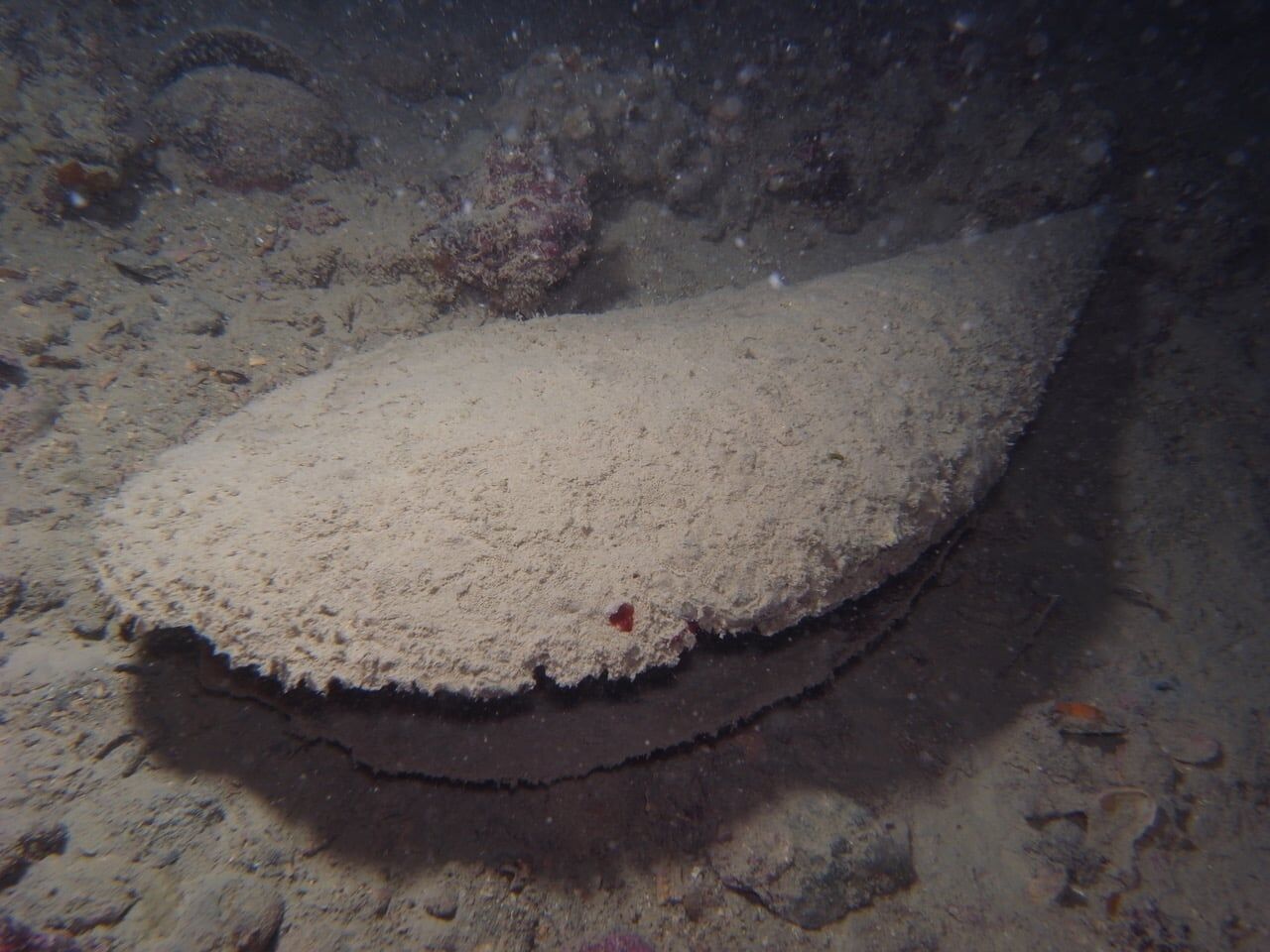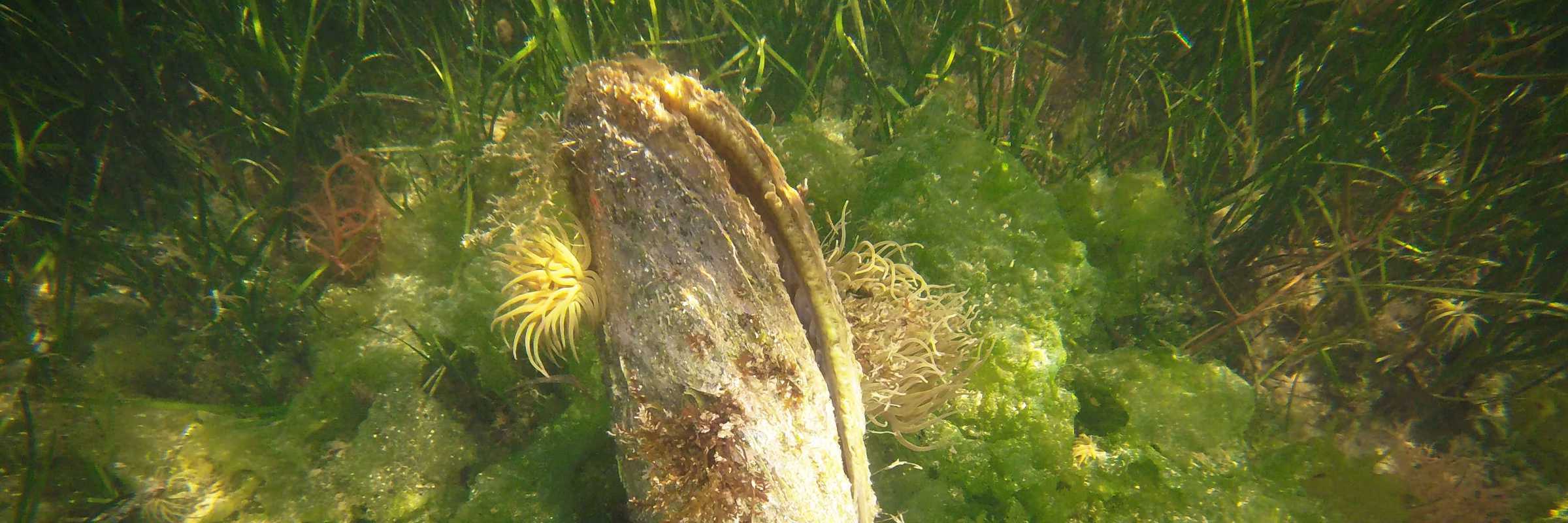The loss of biodiversity has unfortunately become one of the great issues and one of the great challenges of the new century, which affects everyone because we too depend on it, our very survival depends on it.
Pinna nobilis is the name of a large marine invertebrate, also known under the name of sea castanet, stura or palostrega, an endemic species of the Mediterranean (i.e. present only in this area) as well as one of the largest bivalves in the world, which reaches one meter high, so much so that in our lagoon it is possible to see it emerge in conditions of low tide.
Its presence in the entire Mediterranean is fundamental because it is a habitat-building species, which promotes biodiversity, bearer of ecosystem services, as well as flag-species for all other related species that depend on it.
In practice, the Pinna nobilis plays a key ecological role, as a filter of water and as an ideal habitat for other marine species that grow and feed around it, forming rich populations.
In August we talked to Marco Sigovini, from CNR-ISMAR in Venice, head of the joint research project Mappa la Pinna, to understand how the Venetian lagoon seemed to be one of the last healthy places in the whole Mediterranean and how much research in this sense - as indeed the one directed by him - are extremely important to understand the epidemic that has decimated the species from 2016 to today, to identify the factors to restore a balance favorable to the survival of the Pinna and which solutions can therefore be adopted to to safeguard its vitality, so as to reverse the course and repopulate our waters of this important bivalve.
Image

The press release issued on 11 December 2020, however, brings the sad news of the worsening of the situation, with a sudden change in health of the Pinna along the Venetian coast, more precisely at some rock formations that are located offshore, locally known as tegnùe: over 90% of the specimens observed died:
The epidemic that decimated the protected species Pinna nobilis throughout the Mediterranean has probably reached the coasts of Veneto, one of the last areas so far unscathed. A mass mortality event was in fact recorded at the end of November 2020 at some rock formations off the Venetian coast, locally known as "tegnùe". The numbers are alarming: over 90% of the specimens observed have died. The phenomenon was found during investigation activities carried out in collaboration between the Institute of Marine Sciences of Venice (CNR-ISMAR) and the Regional Agency for Environmental Prevention and Protection of Veneto (ARPAV) within the scope of the 2008 Directive. / 56 / EC on the Marine Strategy, with the operational support of Shoreline Soc. Coop.
Previous observations made last September had shown no signs of suffering. The dynamics of the event unfortunately conforms to what was recorded in the other affected locations. The populations of Pinna nobilis present in the other tegnùe scattered between Caorle and Chioggia, as well as in the Venice lagoon, must therefore be considered at immediate risk. In the next few days these areas will be the subject of further investigations by the CNR-ISMAR.
[...]
CNR-ISMAR is involved in various activities for the study and monitoring of Pinna nobilis in the coastal waters of Veneto and in the Venice Lagoon, in collaboration with other technical and scientific bodies. A further investment in terms of research and monitoring is now urgent to face the emergency and guarantee a future for this species. Everyone can make a contribution: the "Mappa la Pinna" initiative, launched through social media last spring, is aimed at divers, boaters and all those who frequent the Venice lagoon and the coasts of Veneto.
There are a couple of other important things to consider: the tidal currents, so important for the lagoon in maintaining a high level of livability, in this case can become vectors capable of transmitting the pathology from the fins on the coast to those inside the lagoon. However, it is equally true that the specific conditions of the lagoon environment could help populations to better resist the epidemic.
Mappa la Pinna more than ever needs our help, which we can do in a simple and very practical way, that is by reporting the presence of the Pinna nobilis - and its health conditions - through the project map (follow the directions, double click on the exactly you want to report, a form will open to be filled in) or by e-mail to [email protected]
Each report can make a difference not only in the beloved lagoon waters but in all coasts ranging from the Adriatic to the gates of the Atlantic Ocean.




